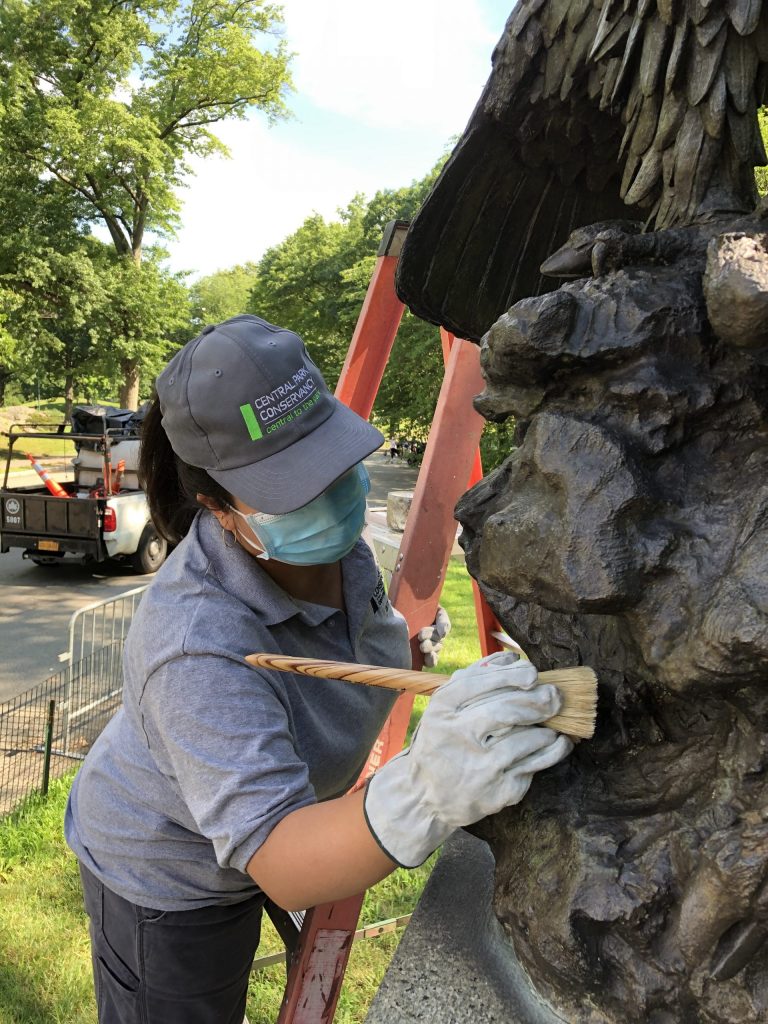 Applying Renaissance Wax on the Eagles and Prey Monument
Applying Renaissance Wax on the Eagles and Prey Monument
Anna Ng graduated from our BA (Hons) Conservation: Stone, Wood & Decorative Surfaces in 2019. Following her studies she moved to New York and is currently working as an early career conservator.
Earlier this year, Anna secured a paid, full-time summer internship position on the Monuments Conservation Technician Program with Central Park Conservancy (CPC), with grants from The Charles Evans Hughes Memorial Foundation.
CPC is a private, not-for-profit organisation dedicated to the maintenance and preservation of Central Park, NYC. Conservation technicians are involved in the annual programme of examination, documentation, preservation and conservation of the bronze and stone sculpture in the park, and additional special projects.
During the internship, Anna worked as part of a team to treat many of the monuments in the park, developing a wide range of practical skills and techniques.
In Anna’s own words, here are some of the programme highlights.
COLUMBUS CIRCLE
After the graffiti removal treatment, to improve the stark and slightly over-cleaned appearance, the lettering on the base of the monument was reinstated with Lithco Black by hand painting with a fine sable hair brush.
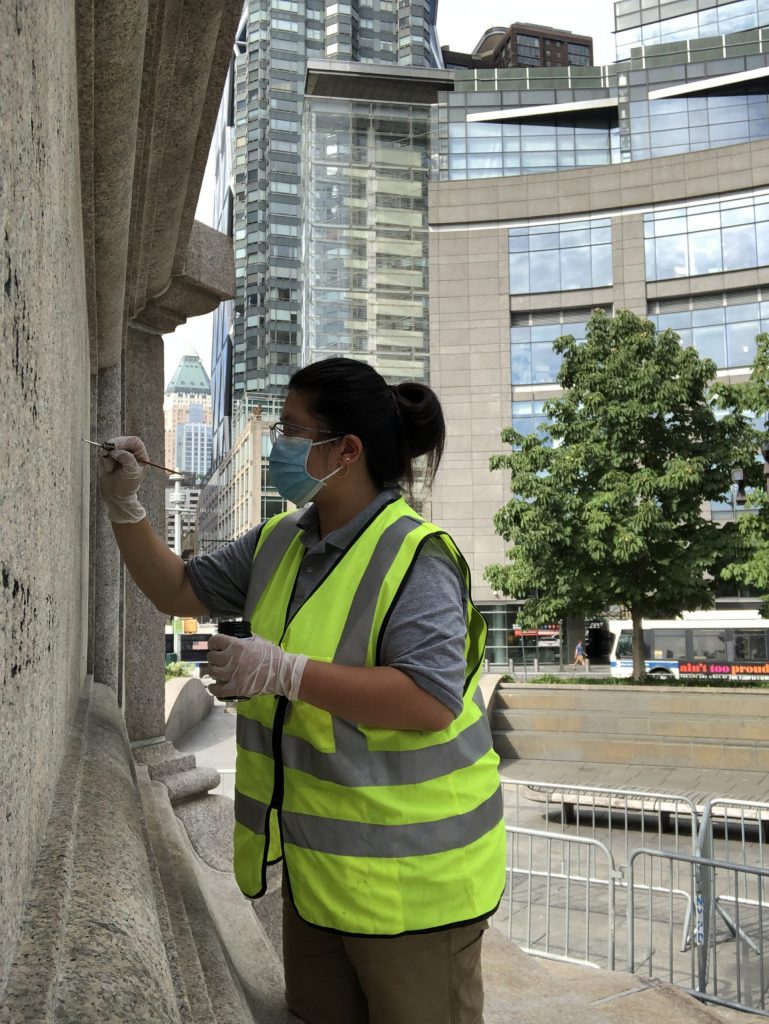 Applying Lithochrome Black on the lettering that has been weathered and powered washed away on the Columbus Circle Monument
Applying Lithochrome Black on the lettering that has been weathered and powered washed away on the Columbus Circle Monument
LOMBARD LAMP
The Lombard Lamp at Grand Army Plaza had a failed coating and a section of missing ornamentation. Initially, the surface was prepared for painting with a pressure washer equipped with a spinner tip as well as scuffed with light abrasives including bronze wool and bronze brushes. Repainting consisted of one coat of primer and two coats of paint in mid-gloss black applied with a spray gun. Originally decorating the Lombard Bridge in Hamburg, Germany, the replica lamp at Grand Army Plaza was painted black in a concerted effort of continuity with its historic predecessors. The Sherwin Williams DTM Wash Primer was left to cure for a day and each coat of Sherwin Williams Semi-Gloss Black acrylic paint was allowed half a day. A mould was taken off the east-facing relief and ornamentation, using Rebound 25, in order to be replicated and installed in place of the missing sections on the west side of the lamp. Afterwards, sealing of the joint below the lamp took place using Dow Corning 795 building sealant (grey).
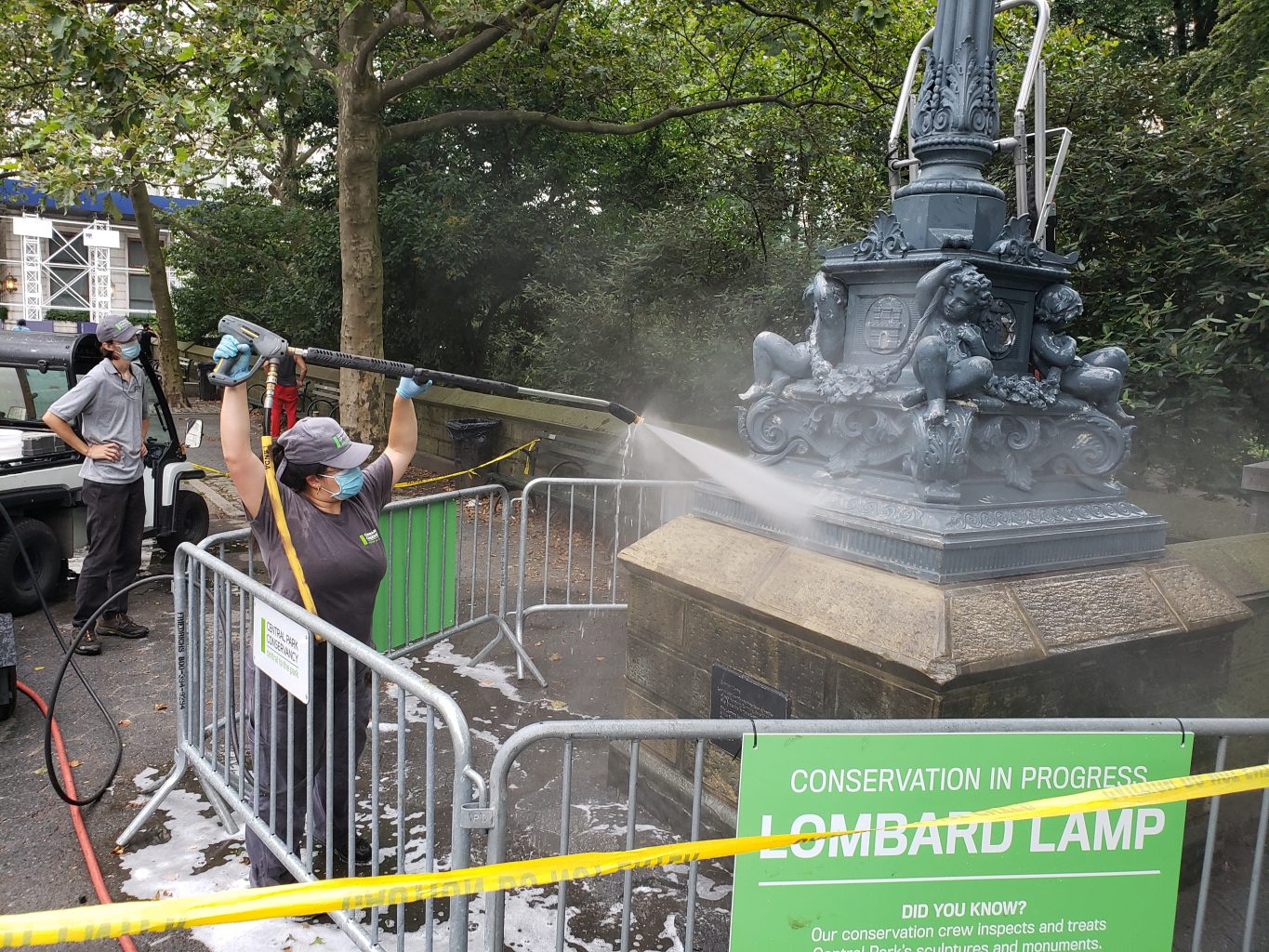 Steam pressure washing the surface of the Lombard Lamp
Steam pressure washing the surface of the Lombard Lamp
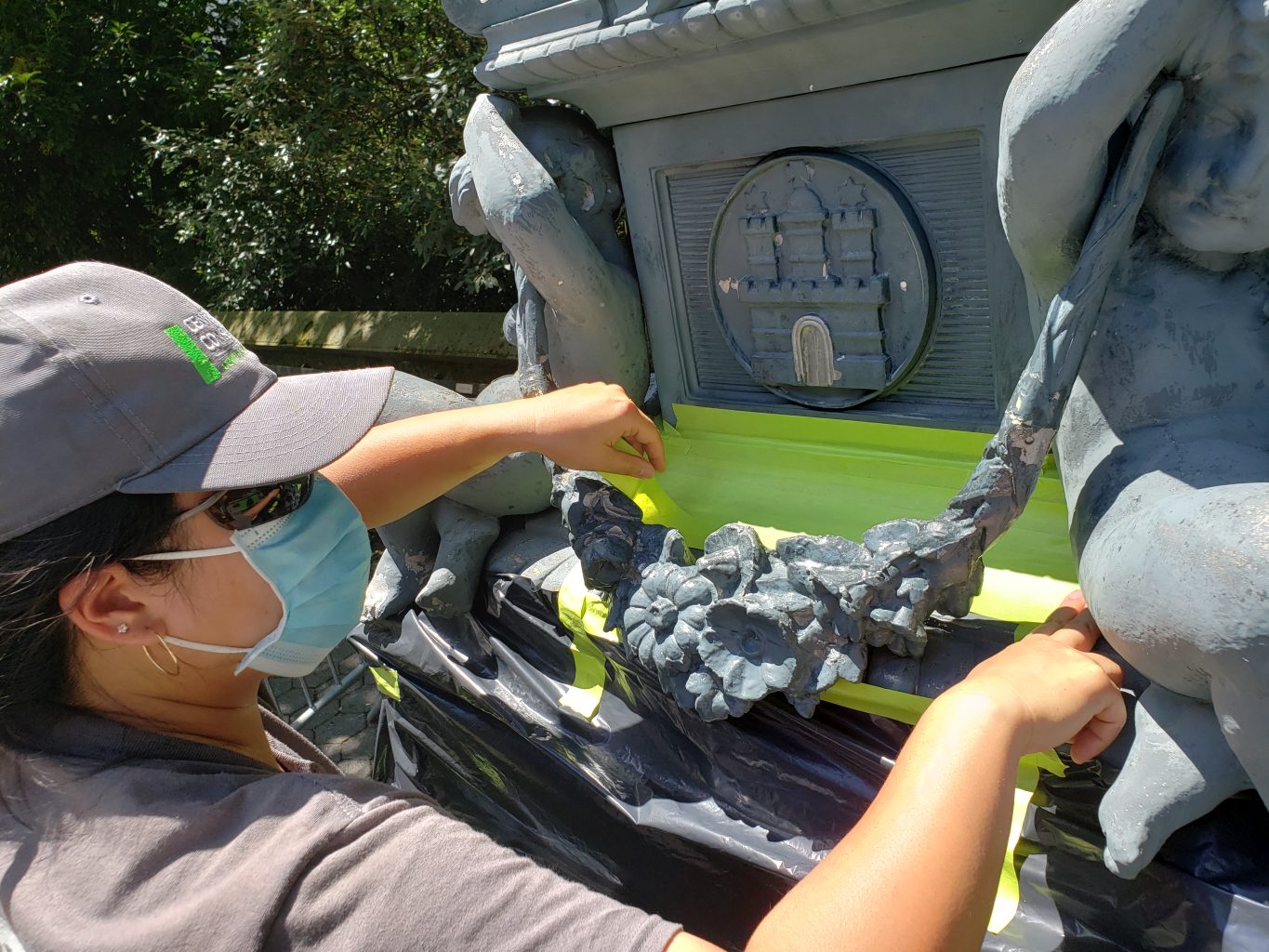 Preparing the surface with masking tape for silicone application on the medallion
Preparing the surface with masking tape for silicone application on the medallion
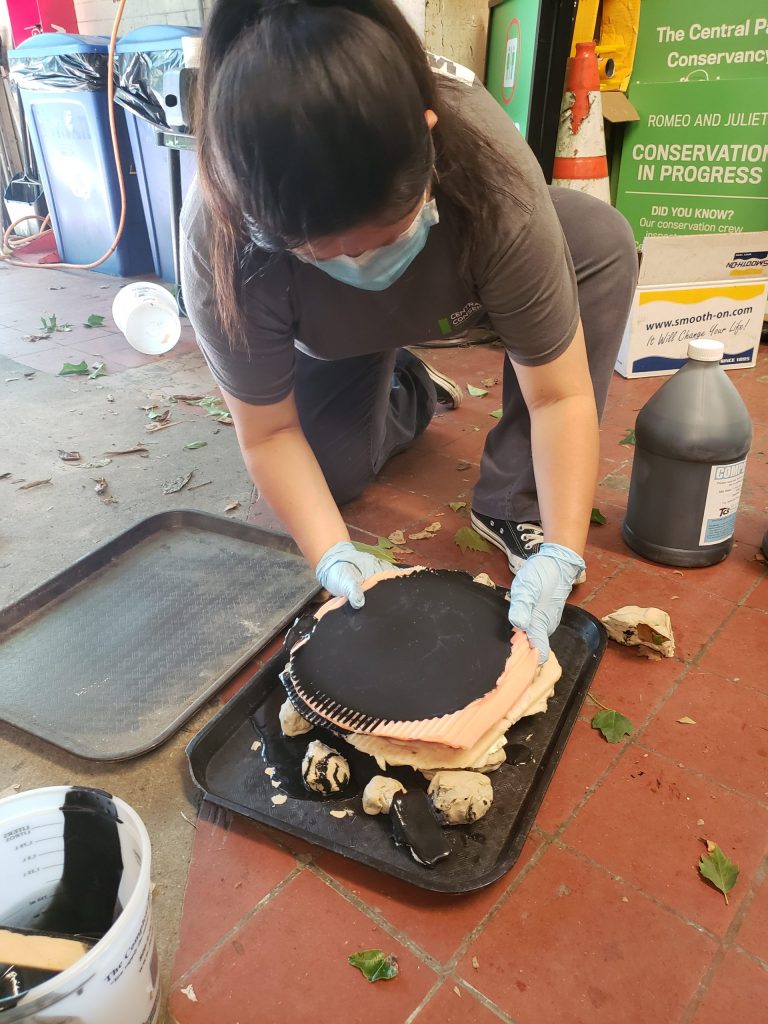
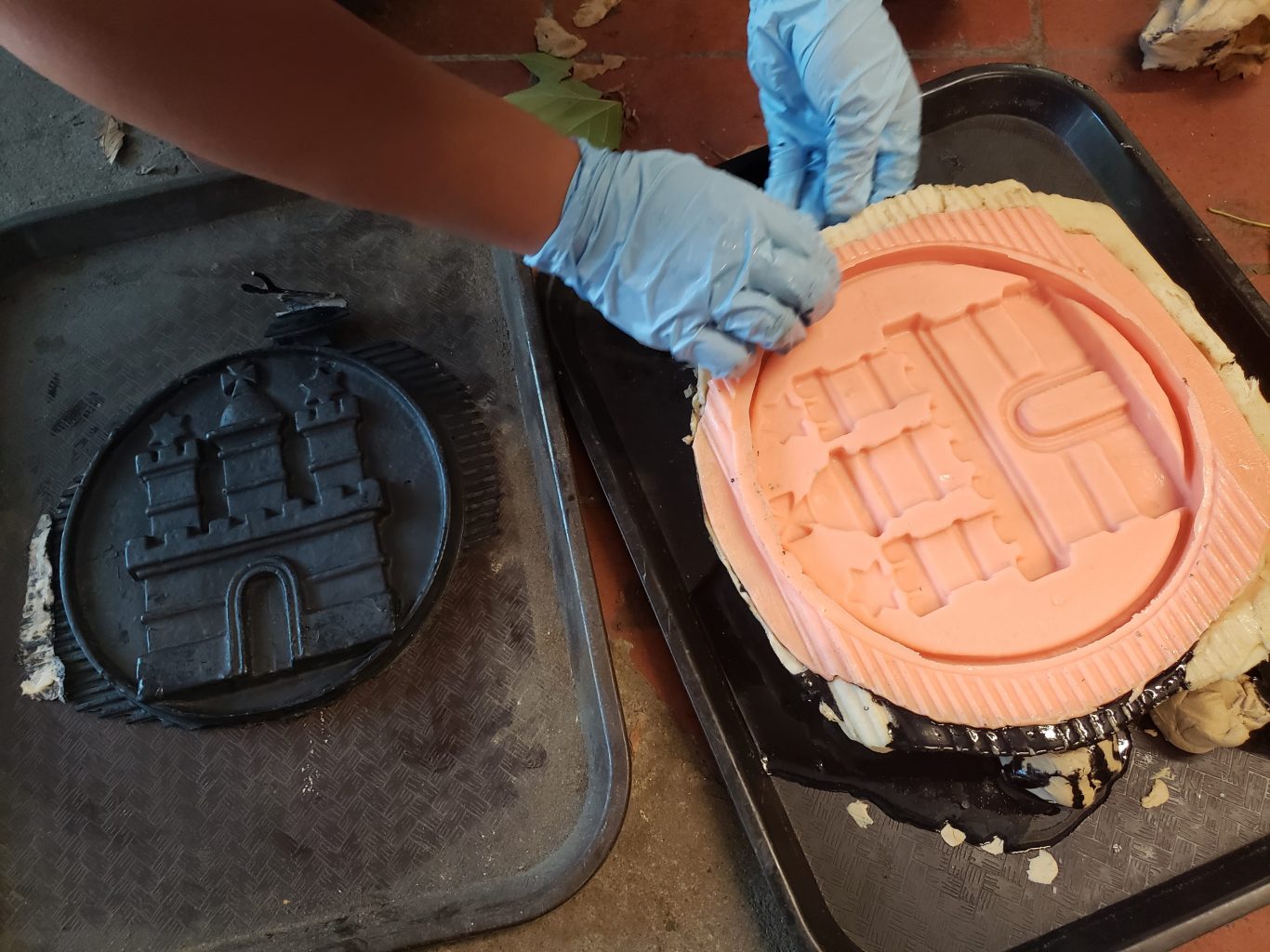 Removal of the test material from the mould
Removal of the test material from the mould
UNTERMYER FOUNTAIN
The Untermyer Fountain features a bronze cast of Walter Schott’s Three Dancing Maidens, completed in Germany prior to 1910. The sculpture depicts three young women, holding hands in a circle and sits on a limestone base. The hot wax coating on the bronze figures have endured weathering and wear from being exposed to the elements. First, the figures and base were pressure washed and cleaned with a mild solution of Vulpex. Then it was dried thoroughly with clean cotton rags. Once the surfaces were clean, clear of debris, and dry, a blowtorch was applied onto the surface and immediately followed by an application of wax that is then spread and punched into the surface evenly, paying close attention to the nooks and folds of the drapery on the figures. The wax was allowed to cool and settle overnight before we followed up with a thorough buffing with clean cotton rags the following day.
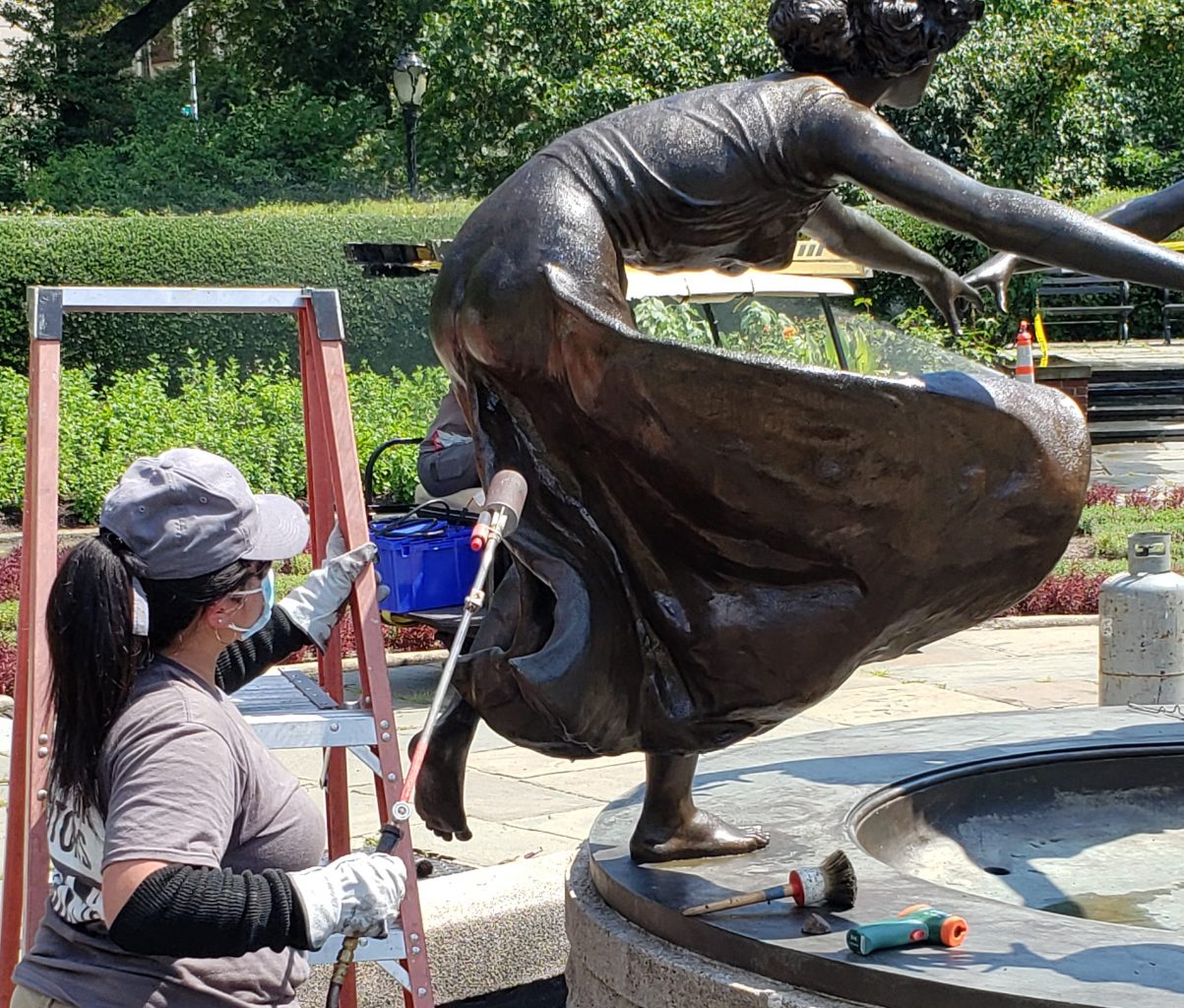 Applying blow torch to heat surface to a temperature of 93C (200F) for the application of a proprietary colour matched hot wax
Applying blow torch to heat surface to a temperature of 93C (200F) for the application of a proprietary colour matched hot wax
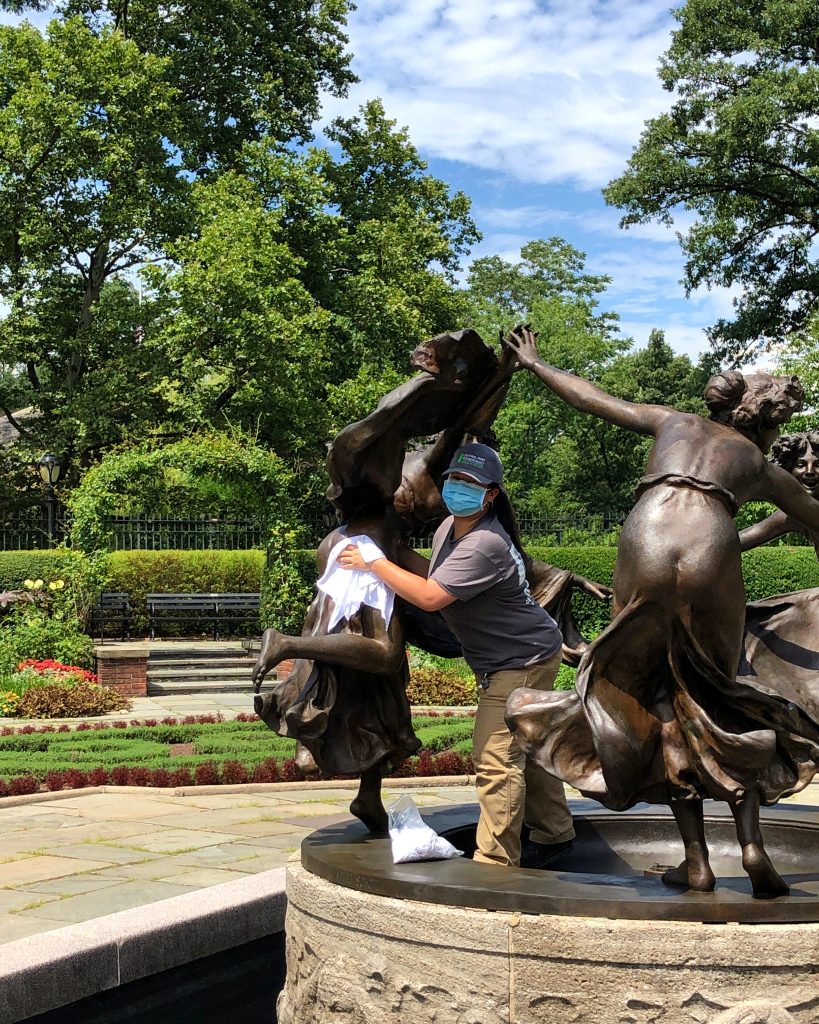 Buffing the Untermyer Fountain figures after a power washing and an application of hot wax
Buffing the Untermyer Fountain figures after a power washing and an application of hot wax
FOUNTAIN AT BETHESDA TERRACE
The graffiti along the base of the fountain was removed through a thick application of Rock Miracle Paint & Varnish Remover with a chip brush then agitated thoroughly to lift the settling spray paint from the surface of the sandstone. The Rock Miracle was allowed to dwell for 30 minutes before a steam pressure wash. The treatment was successful in removing the graffiti.
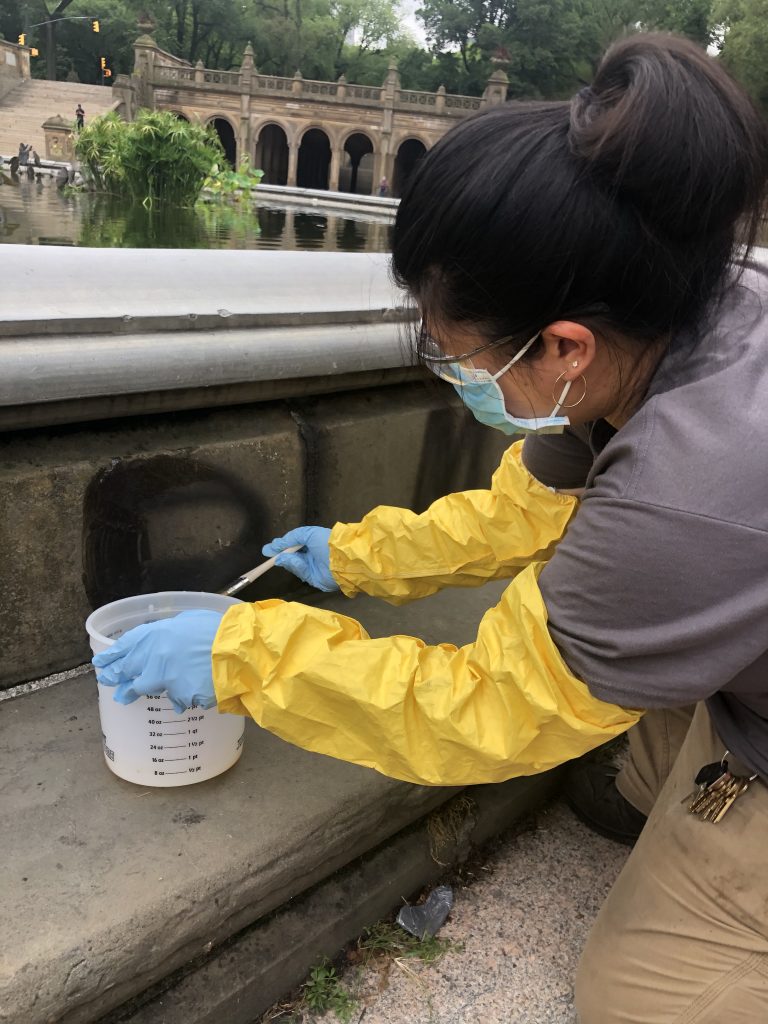 Application of Rock Miracle
Application of Rock Miracle
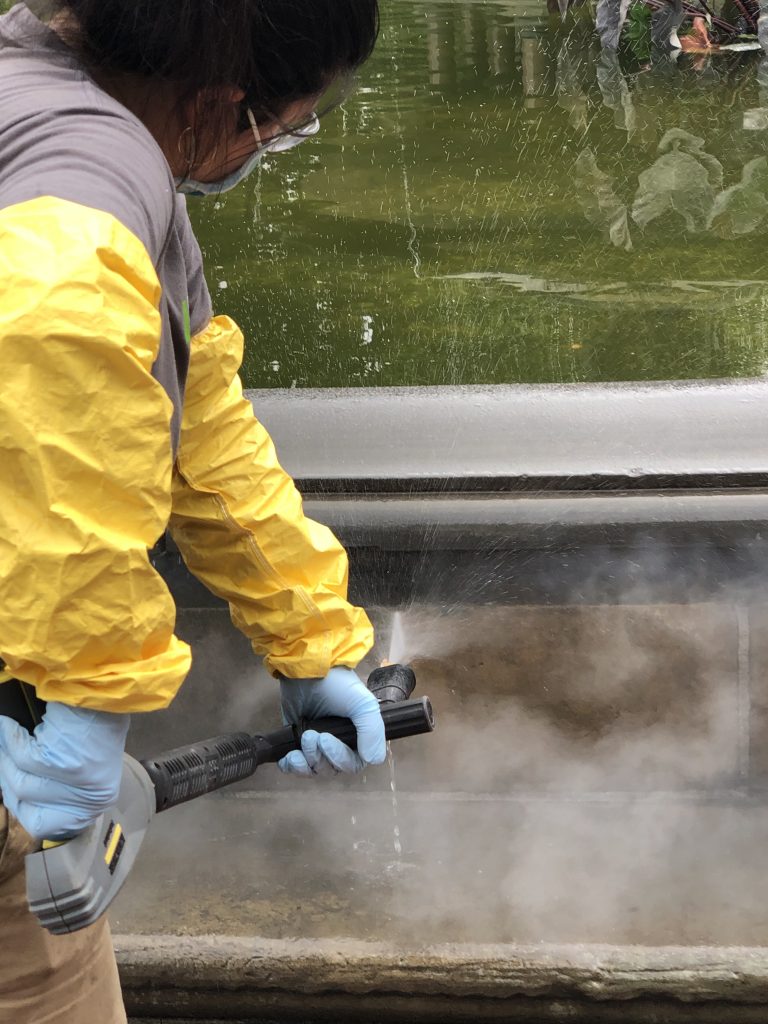
Steam pressure washing of surface to aid in thorough removal of Rock Miracle and spray paint
HIPPOS AT SAFARI PLAYGROUND
The fibreglass hippos have inherent flaws in their fabrication which manifested in cracks, chips, and voids that allow moisture to seep into the internal structure. A 2-part PC-7 epoxy in a colour-matched grey was mixed then applied with spatulas then was smoothed and feathered to blend in the surrounding surface to arrest deterioration.
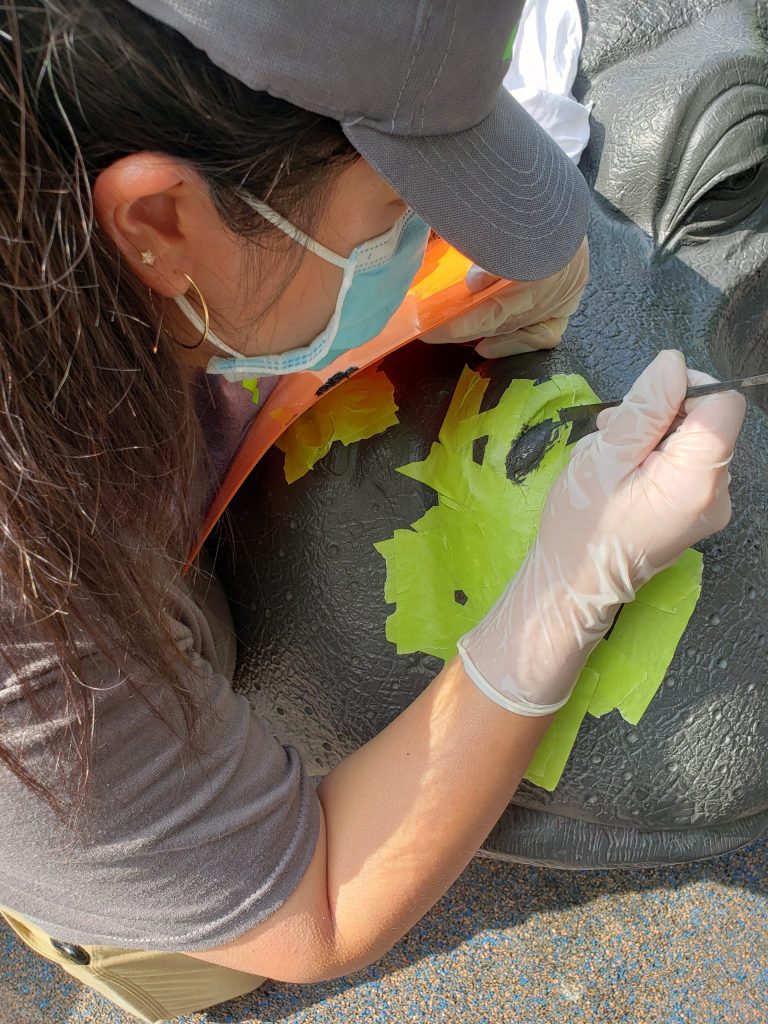 Application of colour matched epoxy onto the surface of hippos
Application of colour matched epoxy onto the surface of hippos


